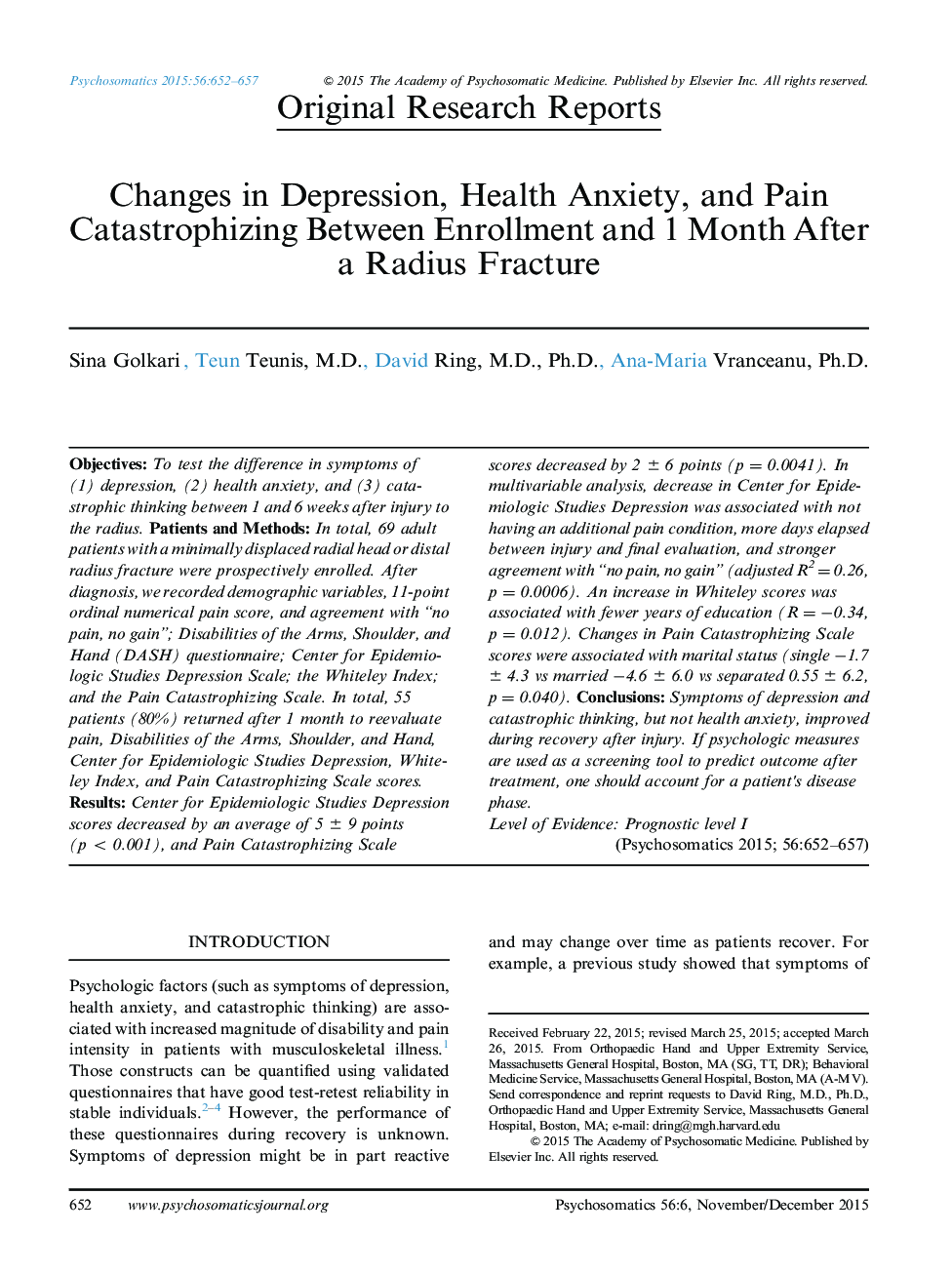| کد مقاله | کد نشریه | سال انتشار | مقاله انگلیسی | نسخه تمام متن |
|---|---|---|---|---|
| 337727 | 547606 | 2015 | 6 صفحه PDF | دانلود رایگان |
ObjectivesTo test the difference in symptoms of (1) depression, (2) health anxiety, and (3) catastrophic thinking between 1 and 6 weeks after injury to the radius.Patients and MethodsIn total, 69 adult patients with a minimally displaced radial head or distal radius fracture were prospectively enrolled. After diagnosis, we recorded demographic variables, 11-point ordinal numerical pain score, and agreement with “no pain, no gain”; Disabilities of the Arms, Shoulder, and Hand (DASH) questionnaire; Center for Epidemiologic Studies Depression Scale; the Whiteley Index; and the Pain Catastrophizing Scale. In total, 55 patients (80%) returned after 1 month to reevaluate pain, Disabilities of the Arms, Shoulder, and Hand, Center for Epidemiologic Studies Depression, Whiteley Index, and Pain Catastrophizing Scale scores.ResultsCenter for Epidemiologic Studies Depression scores decreased by an average of 5 ± 9 points (p < 0.001), and Pain Catastrophizing Scale scores decreased by 2 ± 6 points (p = 0.0041). In multivariable analysis, decrease in Center for Epidemiologic Studies Depression was associated with not having an additional pain condition, more days elapsed between injury and final evaluation, and stronger agreement with “no pain, no gain” (adjusted R2 = 0.26, p = 0.0006). An increase in Whiteley scores was associated with fewer years of education (R = −0.34, p = 0.012). Changes in Pain Catastrophizing Scale scores were associated with marital status (single −1.7 ± 4.3 vs married −4.6 ± 6.0 vs separated 0.55 ± 6.2, p = 0.040).ConclusionsSymptoms of depression and catastrophic thinking, but not health anxiety, improved during recovery after injury. If psychologic measures are used as a screening tool to predict outcome after treatment, one should account for a patient׳s disease phase.Level of Evidence: Prognostic level I
Journal: Psychosomatics - Volume 56, Issue 6, November–December 2015, Pages 652–657
